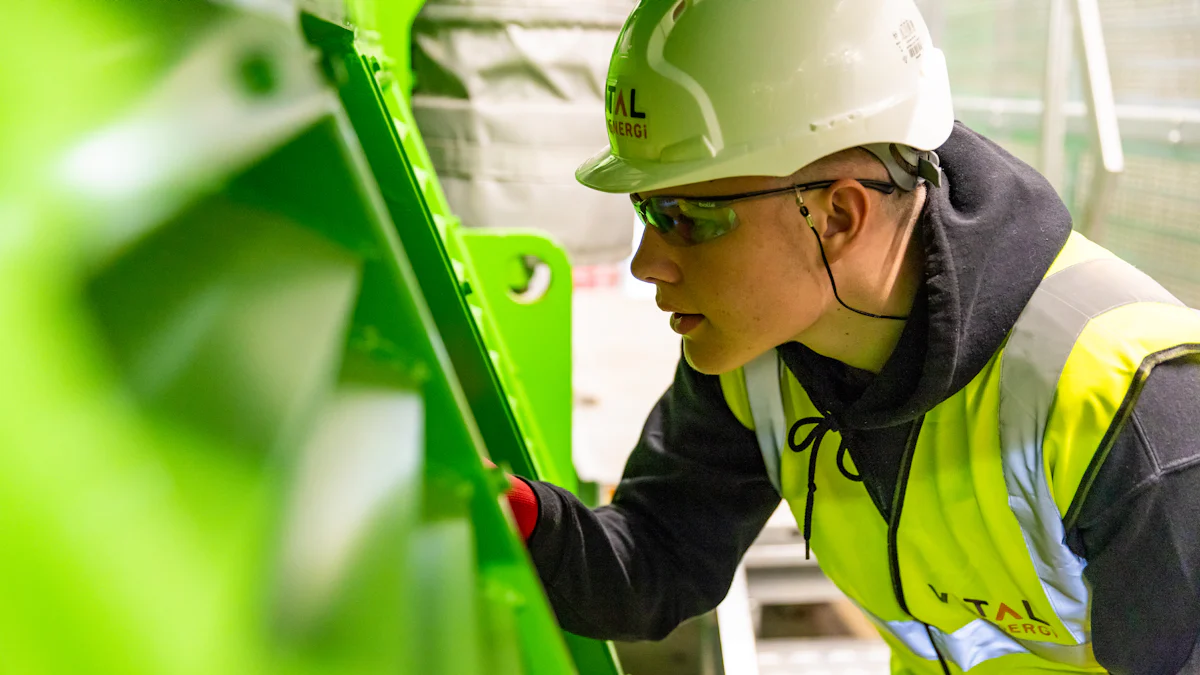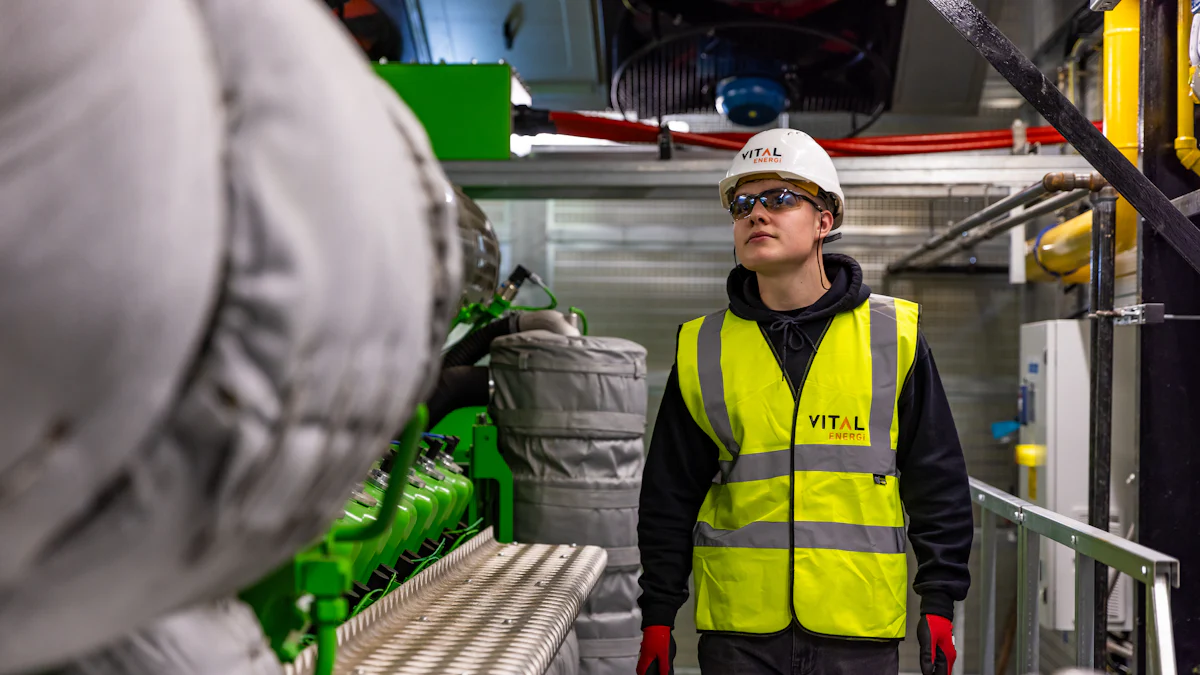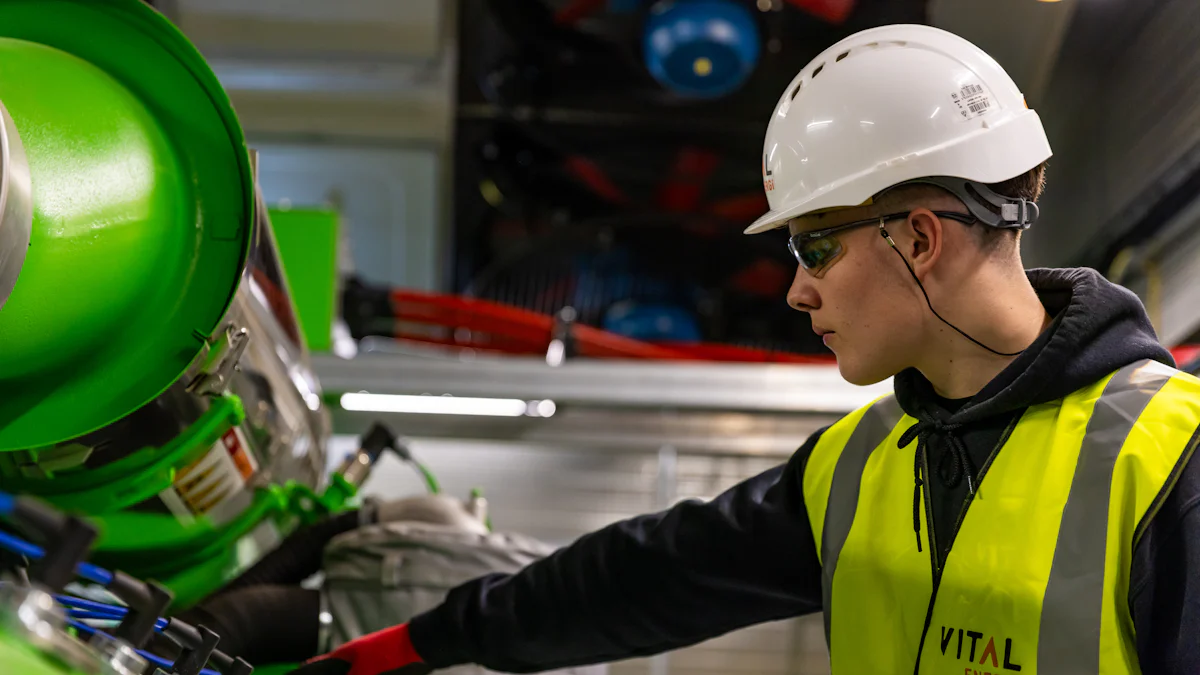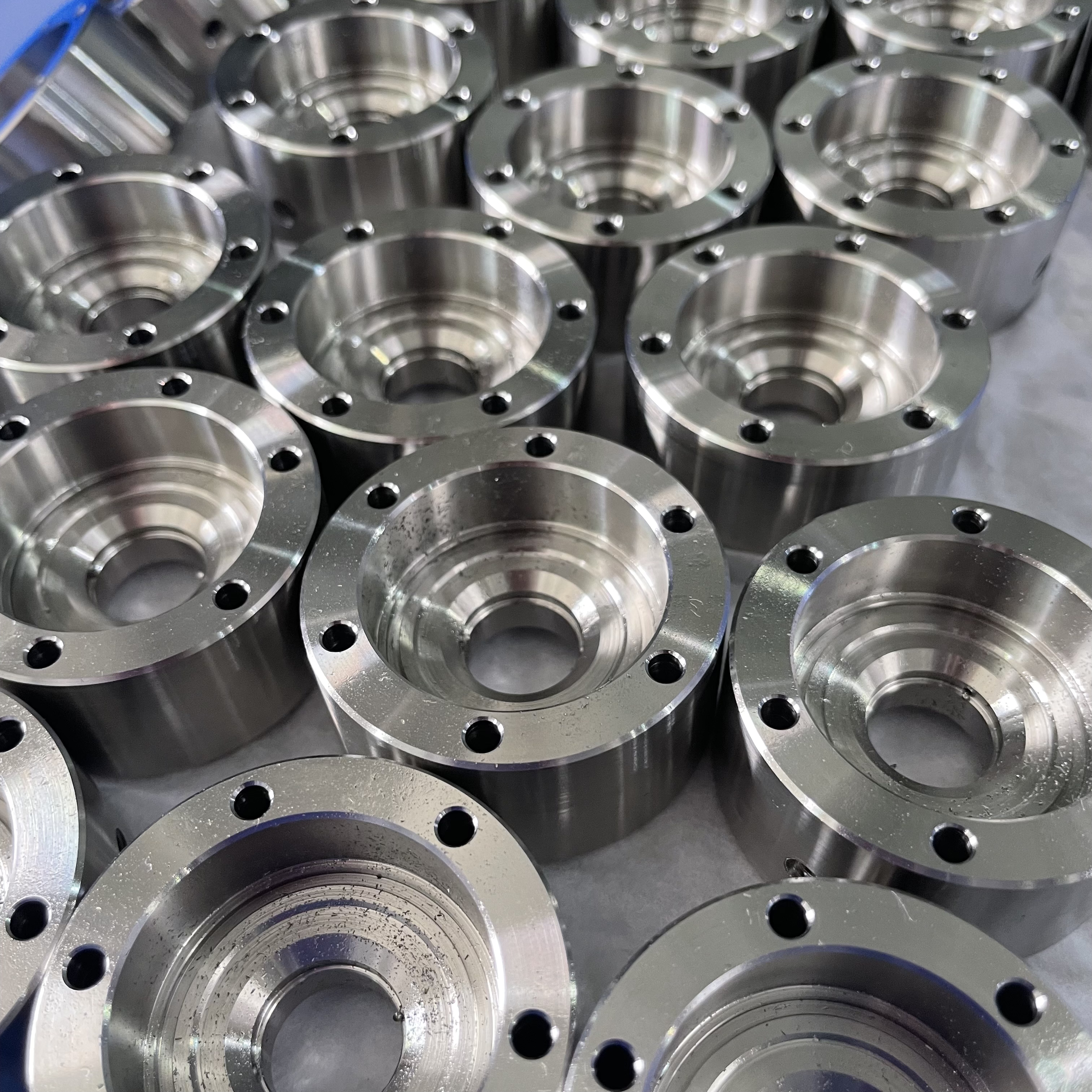Quality Control Secrets for Aluminum CNC Fabrication

Quality control plays a vital role in aluminum CNC fabrication. It ensures products meet precise standards, enhances efficiency, and minimizes costs by reducing material waste. By controlling cutting tools and machine components, you can achieve unmatched precision and reliability. Neglecting quality control, however, can lead to defective parts, financial losses, and a tarnished reputation. Adhering to industry standards like ISO 9001 or AS9100 strengthens customer trust and ensures consistent results. With systematic monitoring and optimization, you can elevate product quality while maintaining operational efficiency.
Key Takeaways
Quality control helps make aluminum CNC parts precise and accurate.
Regular checks and upkeep lower mistakes and make parts last longer.
Training workers is key to avoiding errors and keeping quality high.
Using modern tools and software makes checks easier and more exact.
Following rules like ISO standards gains trust and boosts your image.
The Benefits of Quality Control in Aluminum CNC Fabrication
Precision and Accuracy in CNC Machining
The role of tight tolerances in achieving high-quality results.
Tight tolerances are essential in cnc machining to ensure parts meet exact specifications. Even minor deviations can render components unusable, especially in industries like aerospace or automotive. Quality control allows you to monitor and adjust machining processes, ensuring dimensional accuracy and tolerance are maintained. Regular inspections, such as measurement checks, help identify issues like tool wear or misalignment before they affect production. By prioritizing precision, you can achieve consistent results that meet industry standards and customer expectations.
How precision enhances product reliability and performance.
Precision directly impacts the reliability and performance of aluminum components. Accurate machining ensures parts fit seamlessly into assemblies, reducing the risk of failure during operation. Quality control minimizes errors, leading to products that perform as intended under various conditions. This reliability not only enhances customer satisfaction but also strengthens your reputation in the competitive aluminum cnc fabrication market.
Durability and Material Integrity
Preventing defects and ensuring long-lasting aluminum components.
Defects compromise the durability of aluminum parts. Quality control processes, such as surface finish and roughness checks, help prevent issues like cracks or uneven surfaces. Techniques like anodizing and powder coating further enhance material hardness and strength, making components resistant to wear and corrosion. These measures ensure your products maintain their integrity over time.
The impact of quality control on product lifespan.
Durability translates to a longer product lifespan. By implementing quality testing and inspection, you can verify that components meet required standards for material hardness and strength. Processes like mechanical and impact testing assess the ability of parts to withstand stress, ensuring they remain functional in demanding environments. This focus on durability reduces replacement costs and builds trust with your customers.
Efficiency and Cost Savings
Reducing waste and rework through effective quality control.
Quality control reduces waste by identifying defects early in the production process. Automated inspection systems ensure parts meet specifications before advancing to the next stage, minimizing rework. This approach not only saves material costs but also improves overall efficiency in cnc machining.
Enhancing production timelines and minimizing operational costs.
Efficient quality control practices streamline production timelines. By maintaining compliance and consistency across batches, you can avoid delays caused by defective parts. Predictive maintenance technologies further reduce downtime, allowing machines to operate continuously. These strategies lower operational costs and increase profitability, making your aluminum cnc fabrication process more competitive.
Challenges in Maintaining Quality Control Parameters
Material-Specific Issues in Aluminum CNC Fabrication
Addressing challenges like thermal expansion and material softness.
Aluminum’s unique properties present specific challenges during cnc machining. Thermal expansion, caused by heat generated during machining, can lead to dimensional inaccuracies. This issue becomes critical when working with complex parts requiring tight geometric tolerancing. Additionally, aluminum’s softness and ductility often result in rapid tool wear and the formation of built-up edges. These edges interfere with the cutting process, reducing surface finish and roughness quality. Work hardening, another challenge, occurs when deformation makes aluminum harder and more brittle. This increases cutting forces, accelerates tool wear, and affects dimensional accuracy and tolerance. To overcome these issues, you must use sharp tools, apply proper cooling techniques, and monitor machining parameters closely.
How aluminum’s properties influence machining precision.
Aluminum’s lightweight and malleable nature make it ideal for cnc machining applications, but its properties demand careful handling. Its thermal conductivity can cause uneven heat distribution, impacting material hardness and strength. These factors influence machining precision, especially in high-speed operations. By implementing quality testing and inspection, you can ensure consistent results and maintain the integrity of aluminum components.
Human and Machine-Related Errors
The importance of operator training and expertise.
Human errors, such as programming mistakes or improper tool selection, are common in cnc machining. These mistakes can compromise dimensional accuracy and tolerance. Operator training is essential to mitigate these risks. By educating operators on machine programming, tool selection, and maintenance protocols, you can significantly reduce errors. Providing access to user manuals and pairing new operators with experienced mentors ensures they gain the expertise needed to maintain quality control.
Ensuring proper machine calibration and maintenance.
Machine calibration and maintenance are critical for achieving precise results. Regular calibration ensures tools remain accurate and produce parts within specified tolerances. Follow a routine maintenance schedule to prevent breakdowns and maintain consistent performance. Control environmental conditions, such as temperature and humidity, to minimize their impact on machine accuracy. After any machine crash, perform immediate recalibration to restore optimal functionality.
Balancing Speed with Quality
Managing the trade-off between faster production and accuracy.
In cnc machining, balancing production speed with quality is a constant challenge. Faster operations often risk compromising accuracy, leading to defects or rework. To manage this trade-off, you must prioritize quality control while optimizing production processes. Implementing on-machine inspection systems allows you to monitor parts during machining, ensuring they meet specifications without slowing down production.
Strategies to maintain quality without compromising efficiency.
Adopting best practices helps you maintain high-quality standards while improving efficiency. Statistical Process Control (SPC) analyzes production data to identify trends and prevent issues. Preventive maintenance reduces downtime, while quality control software enhances inspection accuracy. Accurate tool calibration and operator training further ensure consistent results. These strategies enable you to achieve both speed and precision in aluminum cnc fabrication.
Tools and Techniques for Quality Testing and Inspection

Advanced Inspection Tools for CNC Machining
The use of coordinate measuring machines (CMMs) and laser scanners
You can achieve precise measurements in CNC machining by using advanced tools like coordinate measuring machines (CMMs). These machines automate the dimensional inspection process, ensuring that even the most complex geometries meet tight tolerances. CMMs use tactile and non-contact probes to collect detailed dimensional data, enabling 3D metrology and geometric verification. This ensures that parts comply with design specifications and fit perfectly into assemblies. Laser scanners complement CMMs by capturing high-resolution surface data quickly, making them ideal for inspecting intricate designs or large batches of components. Together, these tools enhance your ability to maintain consistent quality.
Optical measurement systems for precise quality checks
Optical measurement systems provide another layer of precision in quality testing and inspection. These systems magnify a part’s surface, allowing you to detect imperfections that might compromise performance or durability. For example, optical comparators visually inspect surface finishes, ensuring they meet required standards. By incorporating these systems into your quality control process, you can identify and address defects early, reducing the risk of costly rework or product failure.
Software Solutions for Quality Control
Leveraging CAD/CAM software for design accuracy
CAD/CAM software plays a critical role in ensuring design accuracy during CNC machining. It allows you to create precise designs that CNC machines can replicate with minimal deviation. Integrated CAD/CAM systems eliminate errors by synchronizing design and manufacturing processes, ensuring every part adheres to exact specifications. This uniformity simplifies replacements and enhances operational efficiency, making your quality management system more robust.
Real-time monitoring systems to ensure consistent quality
Real-time monitoring systems bring quality control directly into the machining process. Sensors track parameters like temperature and pressure, which can affect product quality. On-machine inspection tools provide immediate feedback, enabling you to detect and correct deviations without halting production. This proactive approach minimizes downtime and ensures consistent quality across all production stages.
Standardized Quality Control Parameters
The importance of adhering to ISO certifications and industry standards
Adhering to ISO certifications strengthens your quality management system and demonstrates your commitment to excellence. Certifications like ISO 9001 emphasize customer satisfaction and continuous improvement, while AS9100 focuses on safety and traceability in aerospace applications. These standards ensure your processes align with industry requirements, enhancing your credibility and market access.
Implementing checklists and conducting regular quality audits
Regular audits and checklists help you maintain high-quality standards in CNC machining. Audits verify that parts meet dimensional and surface finish requirements, while checklists ensure consistency in daily operations. These practices provide insights into areas for improvement, enabling you to optimize processes and prevent errors. By integrating these tools, you can uphold stringent quality control parameters and deliver reliable results.
Best Practices for Quality Control in Aluminum CNC Fabrication

Training and Development for Operators
Ensuring staff are skilled in quality control standards and techniques.
Skilled operators form the backbone of effective quality control in cnc machining. To ensure your team meets high standards, you should implement diverse training programs:
Practical application consolidates theoretical knowledge, helping operators develop essential skills for real-world scenarios.
Classroom training deepens understanding of quality control principles, fostering critical thinking and decision-making.
Online training offers flexibility, allowing employees to learn at their own pace with interactive content.
Coaching and mentoring provide personalized guidance, building confidence and addressing specific challenges.
On-the-job training encourages collaboration and continuous improvement by learning directly from experienced peers.
These methods equip your team to handle complex tasks, ensuring consistent adherence to quality control parameters.
Continuous education on emerging tools and technologies.
Staying updated on the latest tools and technologies enhances your team's expertise in cnc machining. Continuous education offers several benefits:
Hands-on learning improves operational skills and knowledge of CAD/CAM software.
Trainees gain industry readiness, making them valuable in high-precision sectors.
Transferable skills boost adaptability and career longevity.
Familiarity with new processes fosters innovation and creativity.
By investing in ongoing education, you ensure your team remains competitive and capable of delivering high-quality machining services.
Regular Maintenance and Calibration of CNC Machines
Scheduling routine inspections to maintain machine accuracy.
Routine inspections are vital for maintaining the precision of cnc machining equipment. Follow this recommended schedule:
Frequency | Tasks |
|---|---|
Daily | Inspect covers, guards, and safety devices. Check spindle bearings for oil leakage. Verify coolant levels and quality. |
Weekly | Adjust machine slideways if needed. Clean the control cabinet's filter. |
Biweekly | Clean the machine thoroughly using compressed air or a non-flammable solvent. |
Monthly | Adjust limit switches and emergency stops. Inspect electrical wirings and motor brushes. |
Additionally, inspect mechanical parts for wear, replace faulty sensors, and calibrate machines regularly. Document all activities to track maintenance history and ensure compliance with your quality management system.
Preventing downtime through proactive maintenance.
Proactive maintenance minimizes unexpected downtime, which can disrupt production. Predictive maintenance reduces unplanned downtime by 30% and cuts on-site repair time by up to 75%. Scheduling maintenance during non-peak hours ensures uninterrupted operations. These practices extend machine lifespan, improve productivity, and maintain consistent quality.
Data-Driven Quality Control Strategies
Using analytics to identify and resolve quality issues.
Analytics play a crucial role in cnc machining by identifying and resolving quality issues. Effective methods include:
Evidence Point | Description |
|---|---|
Predictive Maintenance | Forecasts equipment failures, reducing downtime and costs. |
Data Analytics | Provides accurate data for better decision-making. |
Pattern Identification | Optimizes machining parameters and predicts tool wear. |
Real-time Monitoring | Detects deviations early, enabling immediate corrective actions. |
Equipment Lifespan | Extends machine life and boosts productivity by minimizing unplanned downtime. |
By leveraging these tools, you can enhance your quality control processes and deliver high-quality machining services.
Implementing feedback loops for continuous improvement.
Feedback loops transform subjective experiences into actionable data, improving problem-solving and strategic planning. Encourage transparency in reporting issues and foster psychological safety within your team. Quick, informal feedback complements formal reports, creating a culture of continuous improvement. This approach ensures your quality control experts can refine processes and maintain high standards in aluminum cnc fabrication.
Quality control is the cornerstone of excellence in aluminum CNC fabrication. It ensures precision, durability, and efficiency, which are critical for producing reliable components. Rigorous inspections verify that every part meets industry standards, reducing risks associated with assembly issues and enhancing customer satisfaction. By adopting best practices, such as operator training and machine calibration, you can maintain consistent quality and meet customer expectations.
Investing in advanced tools and training not only improves product reliability but also strengthens your reputation in competitive industries like aerospace and automotive. Long-term cost savings further amplify these benefits. For example:
Cost-Saving Factor | Description |
|---|---|
Durability and Corrosion Resistance | Components made from aluminum last longer and require less maintenance, leading to lower long-term costs. |
Machinability | Aluminum is easier to machine than harder metals, allowing for higher efficiency and reduced production time. |
Lightweight Properties | Reduces fuel costs in automotive applications, contributing to overall savings. |
Reduced Maintenance and Replacement | Fewer repairs and replacements needed due to the durability of aluminum components. |
High-quality standards not only minimize defects but also foster trust and repeat business. Satisfied customers often provide referrals, enhancing your reputation and driving growth. By prioritizing quality control, you secure long-term success and maintain a competitive edge in the CNC machining industry.
FAQ
What is the most critical aspect of quality control in aluminum CNC fabrication?
Precision is the cornerstone of quality control. You must ensure tight tolerances and dimensional accuracy to produce reliable components. Regular inspections, proper machine calibration, and skilled operators help maintain these standards.
How can you prevent defects during aluminum CNC machining?
Use sharp tools, apply proper cooling techniques, and monitor machining parameters. These steps reduce issues like thermal expansion, tool wear, and built-up edges, ensuring defect-free components.
Why is operator training essential for quality control?
Skilled operators reduce errors in programming, tool selection, and machine handling. Training ensures your team understands quality standards, enhancing consistency and minimizing defects in production.
What tools are best for inspecting aluminum CNC components?
Coordinate measuring machines (CMMs), laser scanners, and optical measurement systems provide precise inspections. These tools detect dimensional inaccuracies and surface imperfections, ensuring components meet specifications.
How does quality control improve cost efficiency?
Effective quality control minimizes waste, reduces rework, and prevents downtime. By maintaining consistent production standards, you save material costs, streamline timelines, and enhance profitability.
See Also
Top Strategies for Achieving Scratch-Free CNC Aluminum Machining
Benefits of Utilizing CNC Machining Services for Aluminum
CNC Machining Aluminum Alloys 6061 and 7075: A 2024 Overview
Grasping Quality Control Principles in Precision Parts Production
Comprehending CNC Machining Techniques for Aluminum Alloy 7075
About US
Follow Us
Your prototype holds unparalleled significance, and we deeply value its uniqueness. Collaborating with you during the preparation phase for running your prototype or parts is a commitment we gladly embrace. Whether it's a single part or a complex assembly, we are dedicated to selecting the optimal tools and pathways to bring your envisioned product to life.
At Precision Fab CNC Machining, we specialize in producing parts for prototypes, short runs, and high-volume production. Our prototyping machine capabilities extend across metal, plastic, and wood machining, with welding fabrication services available to complement and finalize your prototype if required.
Address
Address: Room320 10F, Building A,Nanshan international building, Dayawan District, Huizhou, Guangdong, 516001 China
Contacts
billy@timaycnc.com

